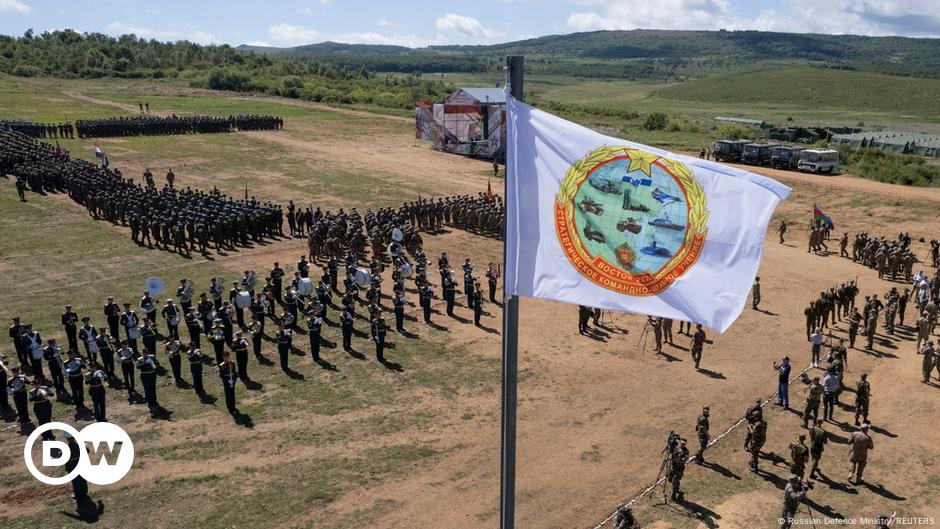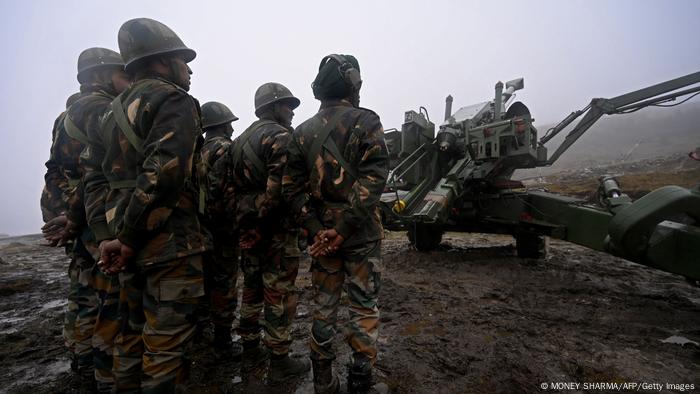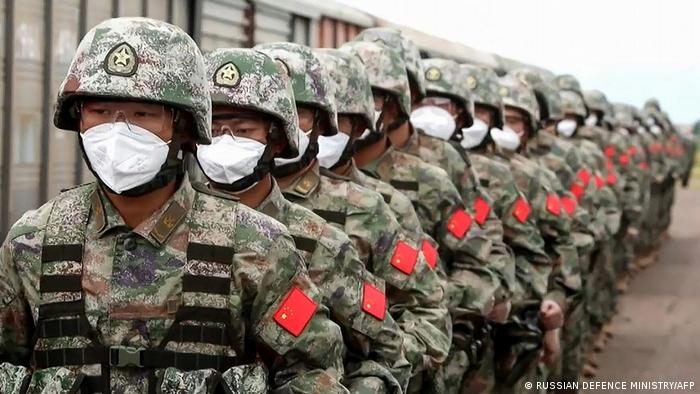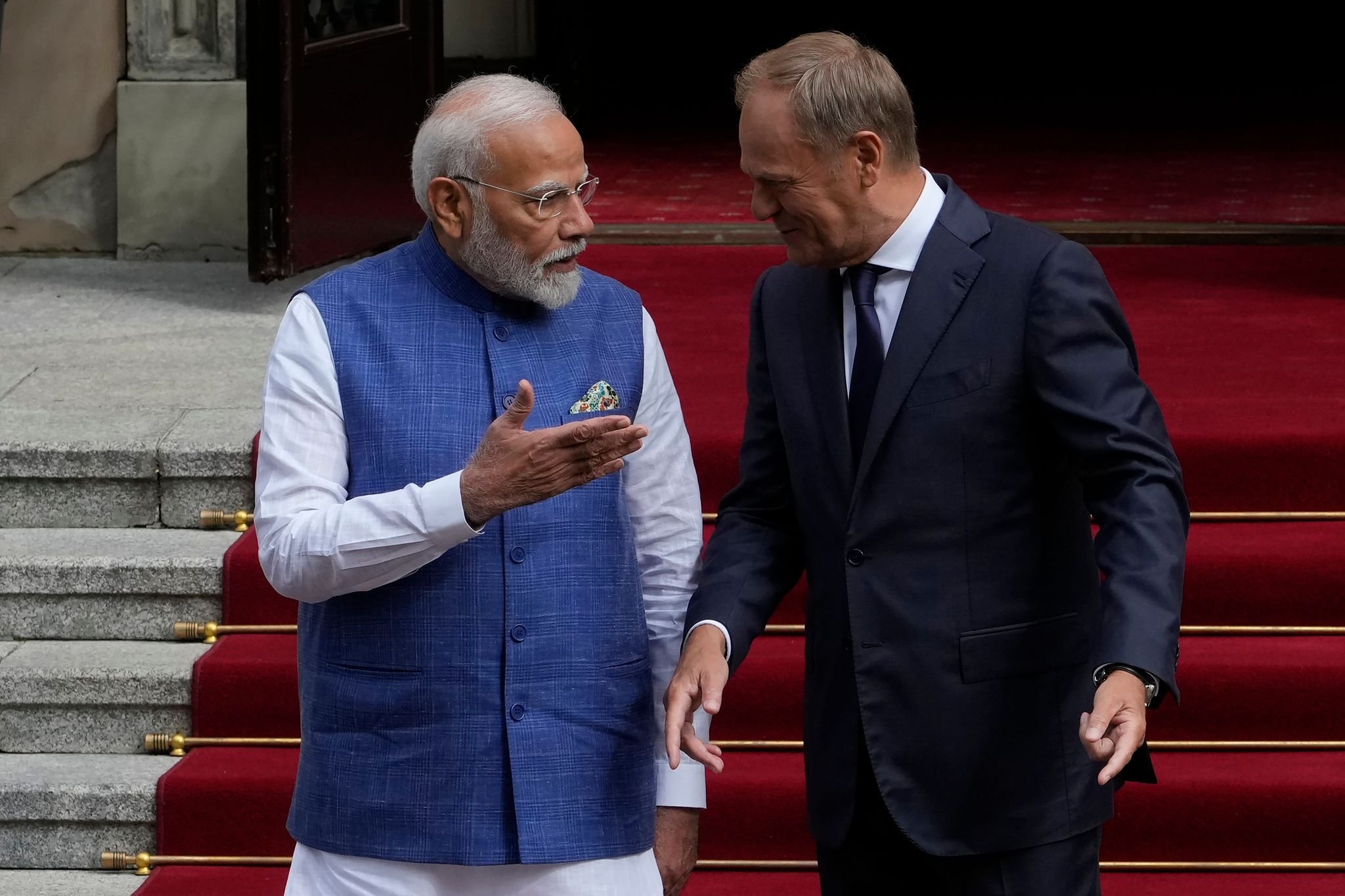On the current multinational maneuver “Vostok (east)-2022″ the Russian army takes part as the heavyweights of Asia, China and India. China’s participation matches the “solid friendship” between Moscow and Beijing that has been resurrected since the beginning of the Ukraine war. China already has 2018, in previous Vostok maneuvers, as a country first outside the circle of ex-Soviet countries. This time taking part in Russian military exercises for the first time with the participation of all three branches of the armed forces, as the party-affiliated newspaper “Global Times” emphasized This shows “the breadth and depth of Russia’s military cooperation -China and the mutual trust between the two countries.”
India’s case is more complex: the country, often referred to as the world’s largest democracy, has close military ties to Russia, but is also a partner to Western countries, including in military matters. For example, India took part in the “Pitch Black” maneuver in northern Australia along with western countries. In addition to several NATO and ASEAN countries, member countries called the Quad Alliance from the United States, Australia, Japan and India also take part in this.
To properly assess the foreign policy significance of India’s participation in “Vostok,” we must compare it to that in “Pitch Black,” said Swasti Rao, Associate Fellow at Manohar Parrikar . Institute of Defense Studies and Analysis in Delhi: In contrast to the Russian maneuvers, where India only took part at the staff level on the ground, India was involved in the exercises in Australia with a much larger and “100 per cent” contingent. Overall, says Swasti Rao, India signifies: “Trade and defense relations with Russia will continue to exist. But at the same time, India is giving greater weight to western partners and partners in the Quad Alliance.”
Close relations with Russia
Despite this, India’s military relations with Russia are very close. Russia is India’s largest arms supplier. According to a report in the “India Today” newspaper, Russian weapons make up by far the largest part of India’s military arsenal. In 2018, India signed a $5.5 billion deal with Russia to supply five long-range surface-to-air missile systems. India says it needs these weapons to counter threats from China.
Overall, the Indian Air Force alone has 200 good Russian-made fighter jets, said Adrian Haack, head of the Konrad Adenauer Foundation office in New Delhi. In addition, there are many aircraft that are also produced in Russia, such as transport aircraft, naval aircraft, and helicopters. The army also has 7,000 Russian-made armored vehicles and a reserve of another 3,000 tanks. In contrast, there are about 250 other types of tanks. The Indian Navy and Russian nuclear powers are even better prepared.
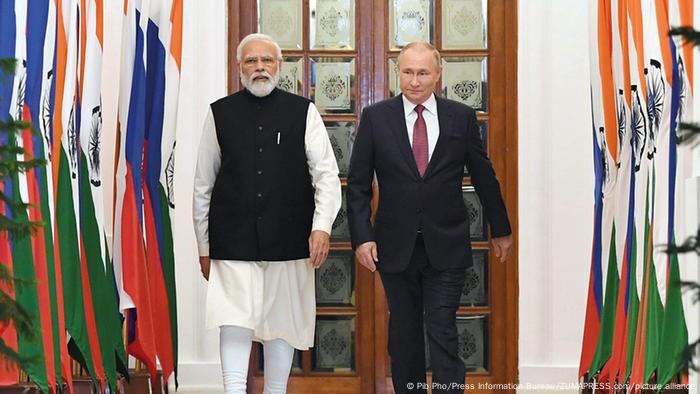
(Archive) Indian Prime Minister Modi (left) meets with Russian President Putin in December 2021 in New Delhi
All of this makes the Indian military very dependent on Russia, Haack told DW. On the one hand, India’s military capabilities are no longer provided as soon as technical support and upgrades from Russia fail to materialize. On the other hand, armies are also closely intertwined through joint training courses and joint maneuvers. “Almost every staff in India has attended courses in Russia. Most soldiers use only Russian weapons systems throughout their professional lives. So it’s a connection that has developed over a very long period of time.”
“Strategic autonomy demonstration”
By participating in the maneuver, India wants to demonstrate its independence in foreign policy and its strategic autonomy, said Christian Wagner, South Asia expert at the Berlin Science and Politics Foundation (SWP). This country is running very carefully. This is reflected in the small number of delegates sent to the Russian maneuvers, as well as in the decision to take part only in exercises on land and not at sea.
Both the small number of men and the restriction of the ground share of maneuvers are a kind of message to political partners, Wagner said. On the one hand, India signaled to Western countries that its participation in the maneuver was primarily symbolic. The message to Japan, on the other hand, was that India did not want to get involved in the Russo-Japanese dispute over the Kuril Islands.
Damage to reputation?
While Europeans view the current maneuver mainly against the backdrop of the Russian attack on Ukraine, another perspective dominates in India, says Adrian Haack of the Konrad Adenauer Foundation: In Delhi, the main focus is on relations with China and at the same time downplaying the damage to one’s reputation in West.
Despite both countries’ participation in Russian military exercises, India’s concern is strained relations with its northern neighbour. Both countries claim land border areas in the Himalayas. In the spring of 2020, there was a clash between the armies of the two countries. According to media reports, up to 60 people were killed.
Strategically, India has its back to the wall, says Adrian Haack. In the event of a conflict, China is likely to outperform India in the Himalayas. Delhi is also concerned about existing or growing naval bases with a Chinese presence around India, such as in Pakistan, Sri Lanka, Myanmar, Djibouti and the Maldives. “That means India is surrounded by land and sea by two adversaries – China and Pakistan – who together have a much better arsenal. And now, at the same time, you see the world’s largest arms supplier and longtime ally, Russia, moving more. and more to China’s orbital apparatus,” is how Haack summed up India’s ominous situation.
competition with China
Participation in the maneuver is also an attempt to defend this ally, which has been reliable for decades – although one should be aware that this is unlikely to work. “The alternative of not participating in this exercise now will ultimately send a clear signal to Moscow that Russia can completely side with China.”
Western capitals are aware of India’s problems, says Christian Wagner of SWP. It is also clear there that India has geopolitical similarities to China. “That is why people are trying to reduce India’s dependence on Russia. Because if Russia, which is weakened by sanctions, turns more to China, that of course could have an impact on Russian arms exports to India.” That is why Western capitals are contemplating closer military cooperation with India in the future, also in the form of increased arms shipments, which should compensate for possible Russian losses and tie India closer to the West. Both experts agree, however, that this offer is insufficient, as India continues to see itself in a difficult situation in terms of foreign and defense policies.

“Subtly charming web junkie. Unapologetic bacon lover. Introvert. Typical foodaholic. Twitter specialist. Professional travel fanatic.”

